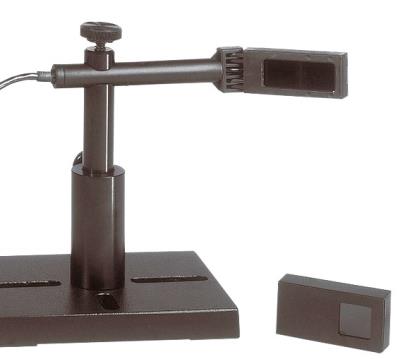
|
|
The Ophir PD300-1W (7Z02411A) silicon photodiode sensor is a laser measurement sensor measuring optical power to 1 W. It has a 10x10 mm aperture with swivel mount and a removable filter. Without filter, its spectral range is 350 to 1100 nm and its power measuring range is 500 pW to 30 mW. With filter the spectral range is 430 to 1100 nm and the power range is 2 µW to 1 W. It has the exclusive Ophir automatic background subtraction feature.
Specifications.
Detector Type: Silicon.
Aperture: 10x10mm.
Spectral Range: 350-1100nm (Filter out), 430-1100nm (Filter in).
Power Range: 500pW to 30mW (Filter out), 2µW to 1W (Filter in).
Power Scales: 30mW to 30nW and dBm (Filter out), 1W to 300µW and dBm (Filter in).
Resolution: 0.01nW (Filter out).
Damage Threshold: 10W/cm2 (Filter out), 50W/cm2 (Filter in).
Max Pulse Energy: 3µJ (Filter out), 200µJ (Filter in).
Noise Level for filter out: 20pW.
Response Time with Meter: 0.2s.
Beam Position Dependence: ±2%.
|